One of life’s great joys is watching your dog bound around like a mad thing in the great outdoors. Tongue lolling, tail wagging; woof, woof, bark bark and all that. Of course, the reason you got a dog in the first place was probably to get out a bit more, and go for long countryside walks together. There are, however, a few important things to know about how to hike with dogs.
For example, it can be difficult to know what to bring, where to go, or even how long to go for when your dog's previous sniffing territory has previously been limited to the local woods. There will probably be be a lot of trial and error as you learn what suits you both, but you'll most likely have a lot of fun in the process. And as with any outdoor activity, there are some risks and safety concerns to understand first - so with that in mind, here is our guide to taking your dog hiking in more remote or mountainous regions for the first time.
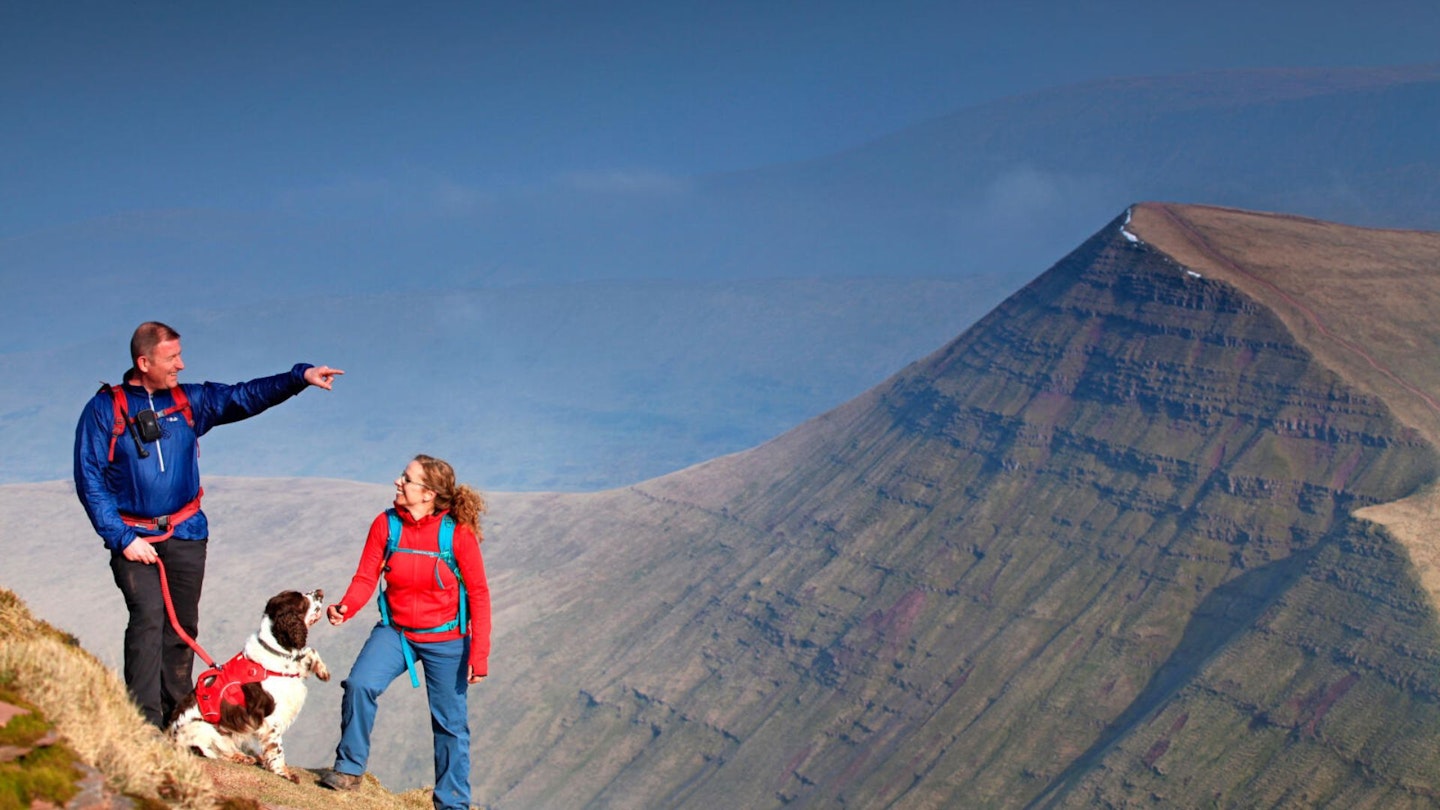
Do not allow your dog off the lead unless it has flawless recall
There is nothing worse than being charged at by an unruly dog, only to have the owner appear breathless, 37 seconds later insisting, “he’s friendly! I promise!” While this behaviour still has consequences in a city park, where it’s usually other dogs or people on the receiving end of bad manners, a rampaging dog in the countryside can have much worse ramifications.
Sheep, deer, cattle, ground-nesting birds - you name it, if you can see it in the countryside, it’s probably a prey animal. And yep - beneath that fur and those friendly brown eyes - your dog is, at heart, a predator. Allowing a dog to be off-lead without recall can spell disaster: dead lambs, maimed sheep, deer with fatal throat injuries - and possibly the loss of your dog if it's deemed dangerous.

Between 2013-2017, 92 dogs in the UK were shot as a result of “sheep worrying”. And if that sounds like a lot, consider that in the last four years over 1800 animals were killed by dogs in the UK. The bottom line is that you are responsible for your dog and how it reacts to its environment. So, before you go anywhere, make sure your dog does what it's told no matter the circumstance. And if not, keep it on a lead at all times.
Choose the right route for your dog
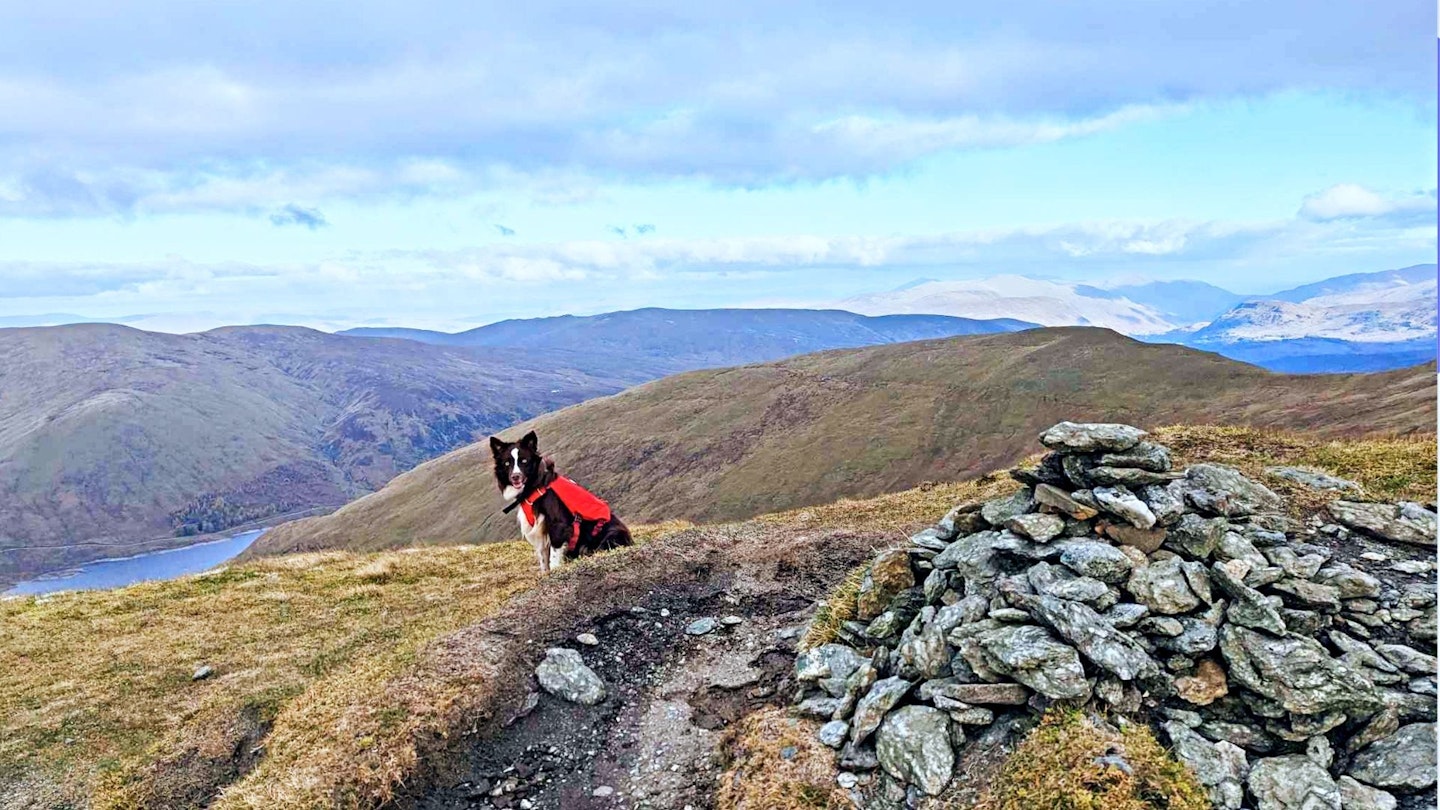
Choosing the right route for both you and the hound is crucial to both your enjoyments on the hill. If you’re just starting out with a young dog, firstly make sure they’re actually old enough to go on the length of hike you’re proposing. Waiting until they’re around a year old for longer walks is essential, or they could risk damaging growth plates or straining their muscles. And no matter the age of your dog, if you’re doing something demanding like a fell-round or a day’s munro excursion with lots of ascent and descent, it’s best to build up to those sorts of distances.
Beyond that, there’s the “can I bring my chihuahua up Ben Nevis” discussion of breeds, centring around their suitability for different intensity of walking. (The answer to the Chihuahua question is, yes, probably, as long as you’re prepared to carry them a bit). It’s also pertinent to bear in mind that larger, older dogs may not be as mobile as they once were, and little dogs’ legs can tire easily, so always watch out for signs of exhaustion in your pup.

Breeds like sheepdogs, terriers, and gundogs (such as labs, pointers and spaniels) are all genetically bred for intense outdoor work, so they’ll most likely thrive in a mountain environment - and even better, they’ll be tired out by the time they get home for once.
If your dog isn’t a seasoned walker, it’s also a good idea to have an escape route, or a designated backpack for smaller breeds if they do begin to struggle.
Be aware of canine hazards

Something like a deep river, or an exposed cliff-edge might be nerve-wracking for a human being to walk near, but if you’ve got your brain in and you’re on a sensible path, it’s probably not going to be deadly. Dogs, however, don’t typically remember to perform regular risk assessments, so it’s therefore your job as a human to be aware of these hazards for them, especially if they’re off the lead. Check your route beforehand (both on a map, or by scouting it out, if practical) for high cliffs, ravines, fast-flowing bodies of water they might jump into; if in doubt, keep them on a lead through areas you’re not sure about. It’s also worth thinking about river crossings and styles here - if you do need to carry your dog for any part of the walk, can you manage it?
Does my dog need to wear shoes?
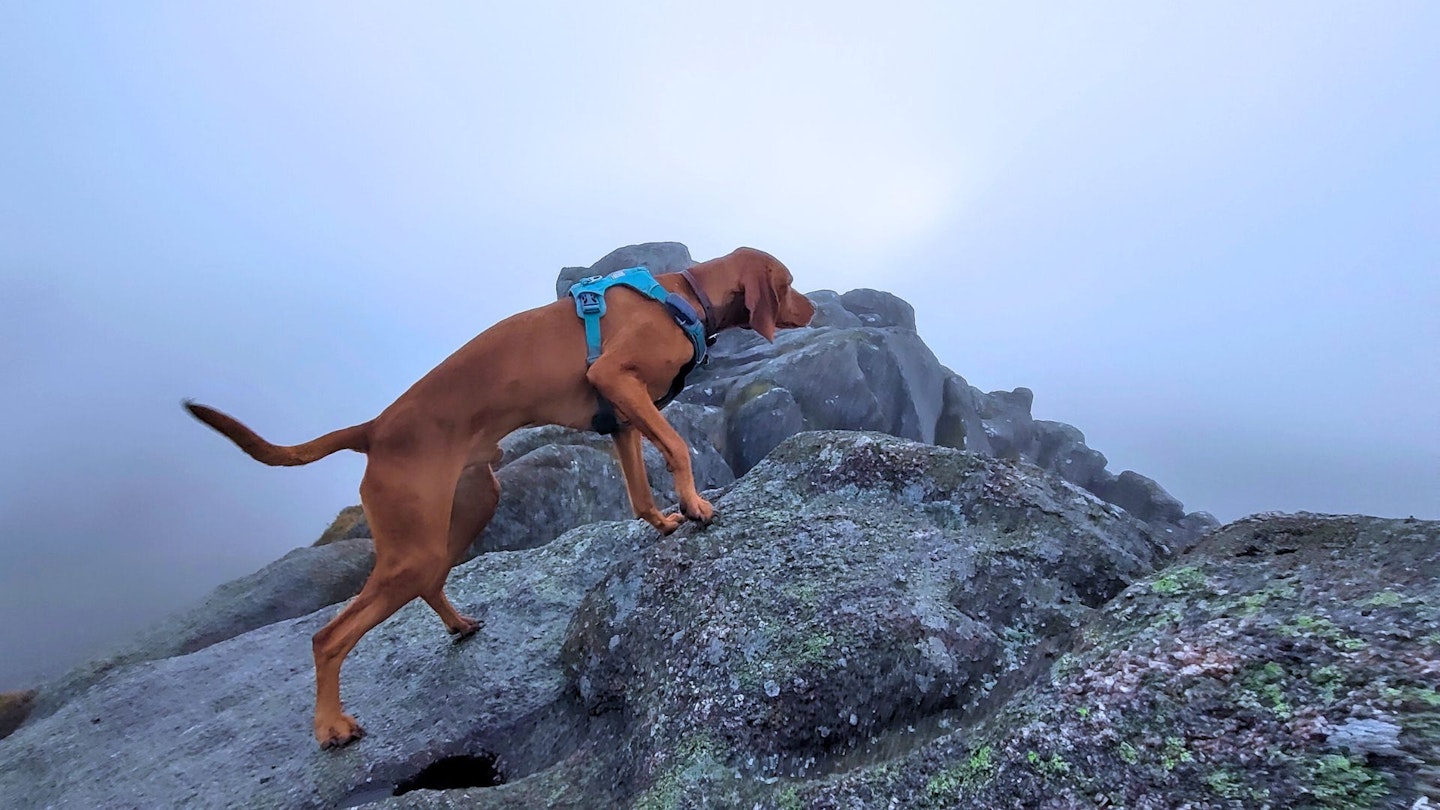
The other thing to be aware of is the ground and how sharp it might be for wee paws. The gabbro of some of the western Highlands, for example, can be very tough and abrasive, as can some other rock-types you’ll find in mountainous regions. Additionally, if you're on hard trails the whole time, there can often be little in the way of respite for sore paws - especially if you're covering more than 20km per day.
We recommend paw protectors for long-distance, jagged or rocky trails. Often putting them on is an entertainment activity in itself - but once your dog is used to them, there’s less chance of them injuring themselves, which could prevent an expensive vet visit.
 Amazon
AmazonSet of breathable, reflective dog shoes in a range of sizes.
Take only photos, leave only pawprints
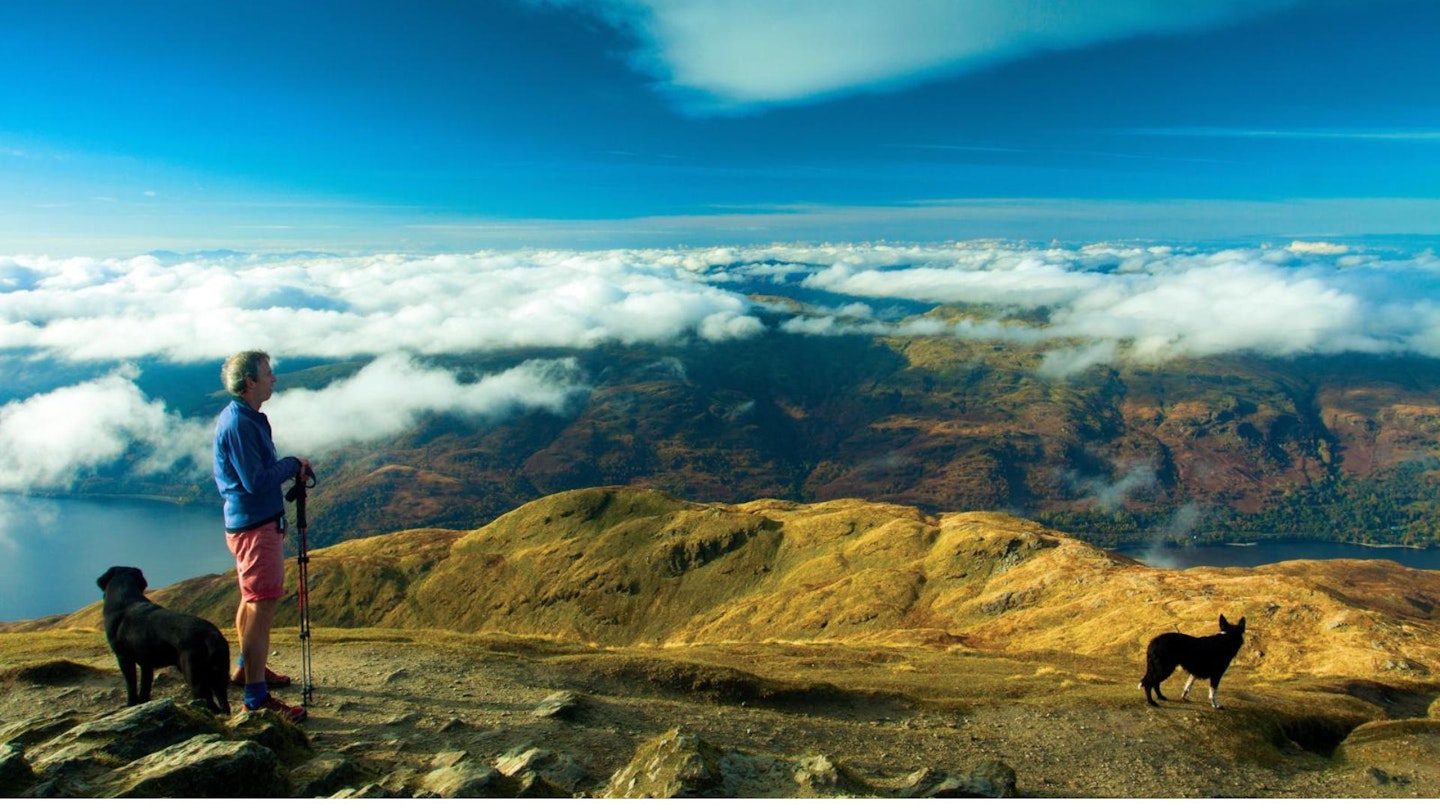
It shouldn’t have to be said, but sadly there are a minority of dog-walkers who ruin things for other people: so please pick up your dog’s waste. Even when you’re deep in the hills, flicking with a stick can have environmental impacts that go beyond someone else stepping in it. Dog waste can contain nasty microorganisms which are harmful to surrounding wildlife, plus it takes much longer than you think to decompose. Always bag it, and then bin it. Leaving it bagged and unbinned (i.e. hanging in a tree, or on a wall as some dog-walkers like to do) is even worse than not picking it up at all.
Bottom line: Put. Your. Dog. Poo. In. The. Bin.
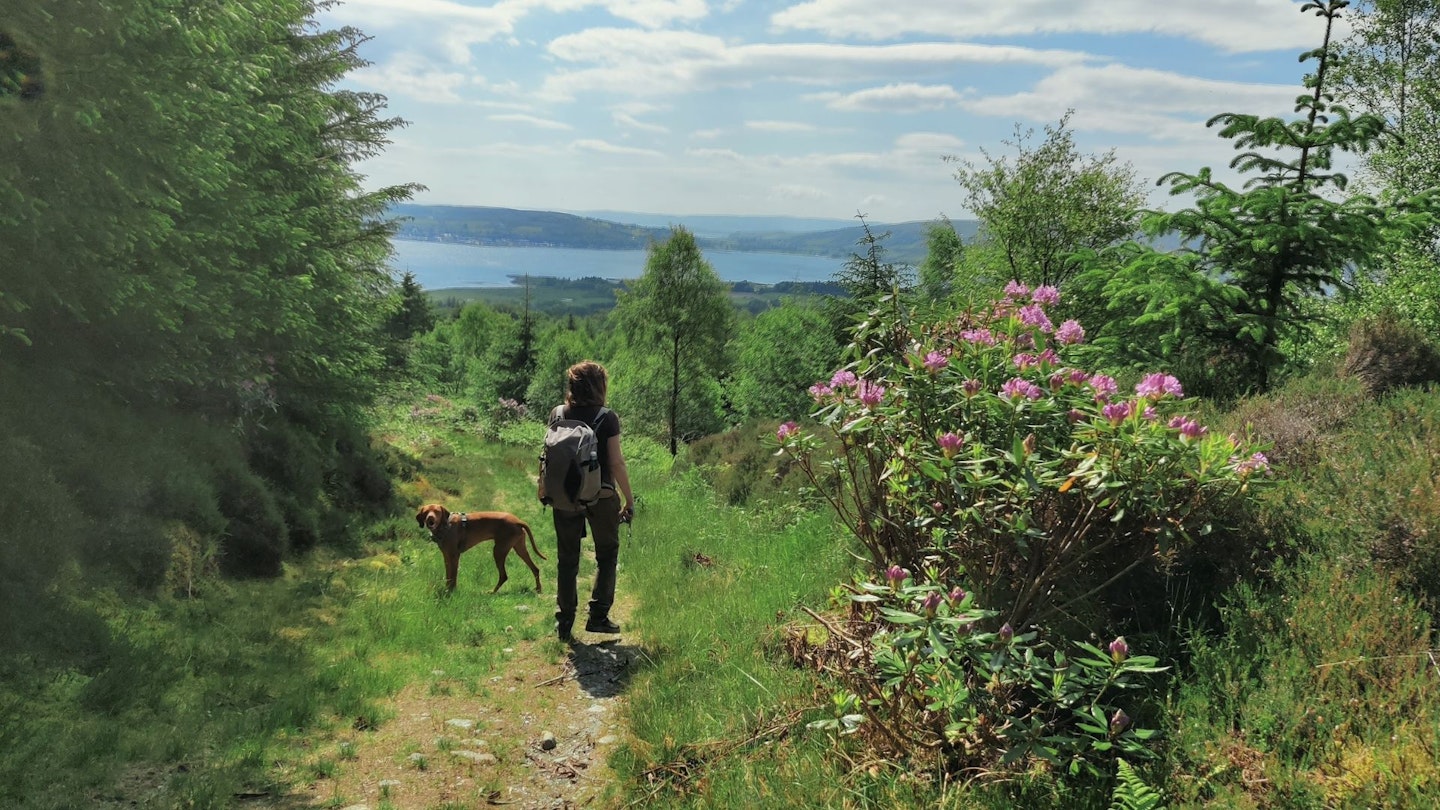
The same goes for losing plastic toys or balls - make sure you find them and bin them if they’re broken rather than littering the trail.
Pack the right equipment
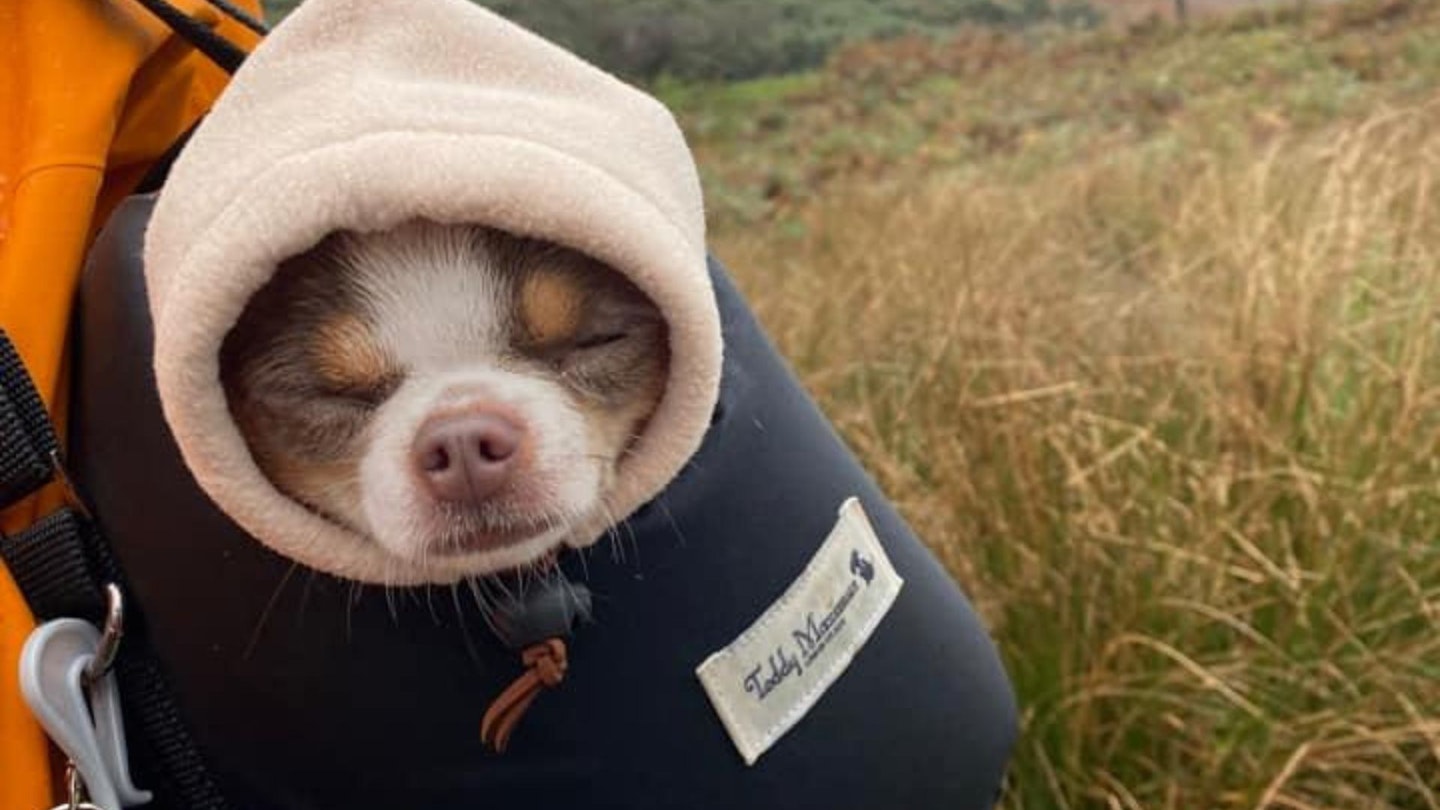
Harness vs collar
When hiking with your dog, a harness is a better bet over a collar. Not only is it more comfortable for your dog when on the lead, it provides slightly more insulation and you’ll also have the advantage of having a handle for your dog if you need to carry them over streams or styles. Harnesses also allow for the attachment of a tracking device, which can give dog owners peace of mind if something does go wrong (but shouldn’t be relied upon over good recall). It’s best to choose a harness that is rugged and durable; they’re not cheap but they do last.
Pair the tracker with an app and have peace of mind that even if your dog is out of sight, you still know exactly where they are.
 Amazon
AmazonFood & Water
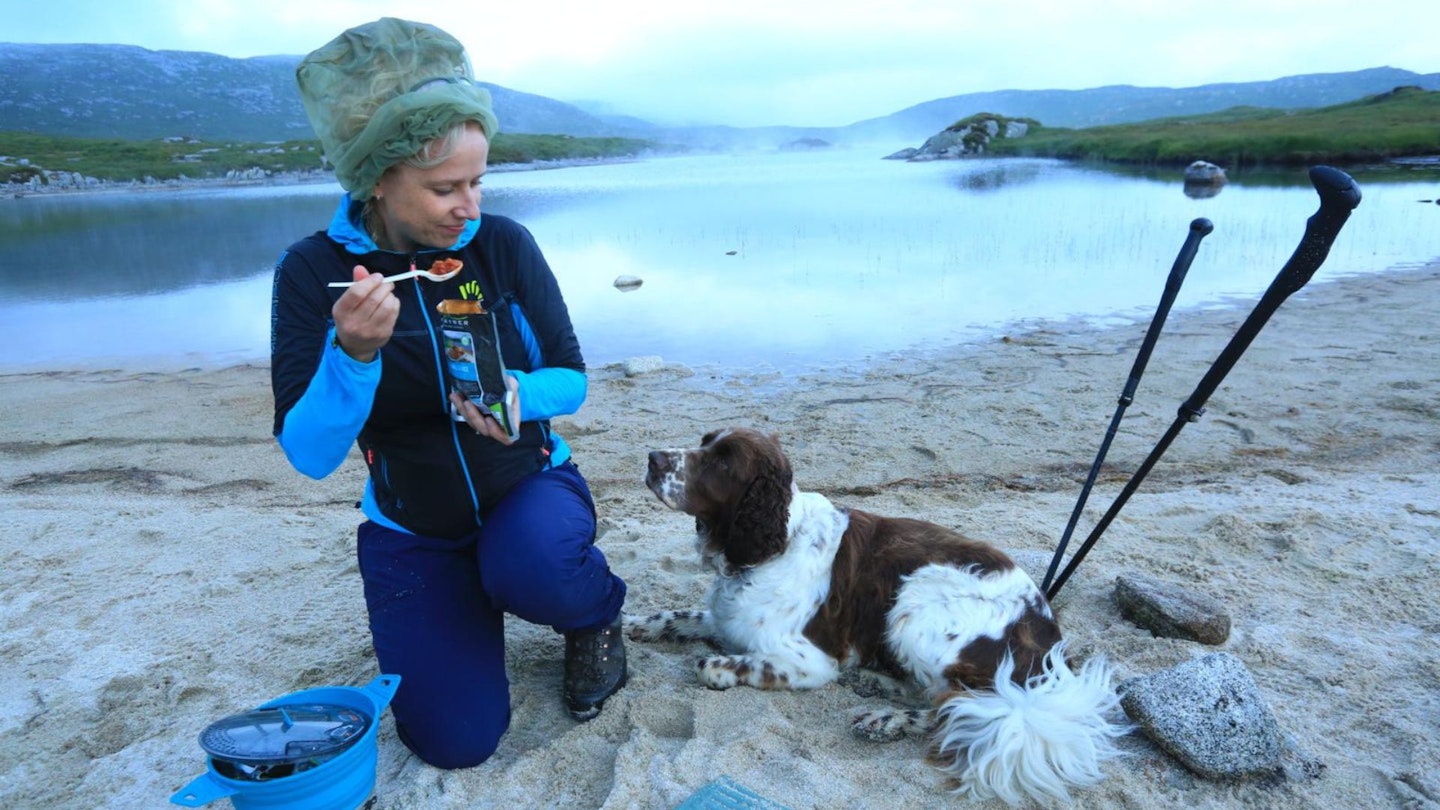
Like you, the hound will be hungrier than usual on a hike - they can easily burn double their usual daily calories if they’re bounding about a hillside in the snow. Bringing a collapsible food bowl and a small ziplock bag of kibble with you is a good idea - that way, your dog can stay full of beans all day rather than making them wait until you’re back at the car, or back home to properly refuel. Treats are great too, especially if they’re not used to a mountain environment and need a bit more convincing that everything is ok.
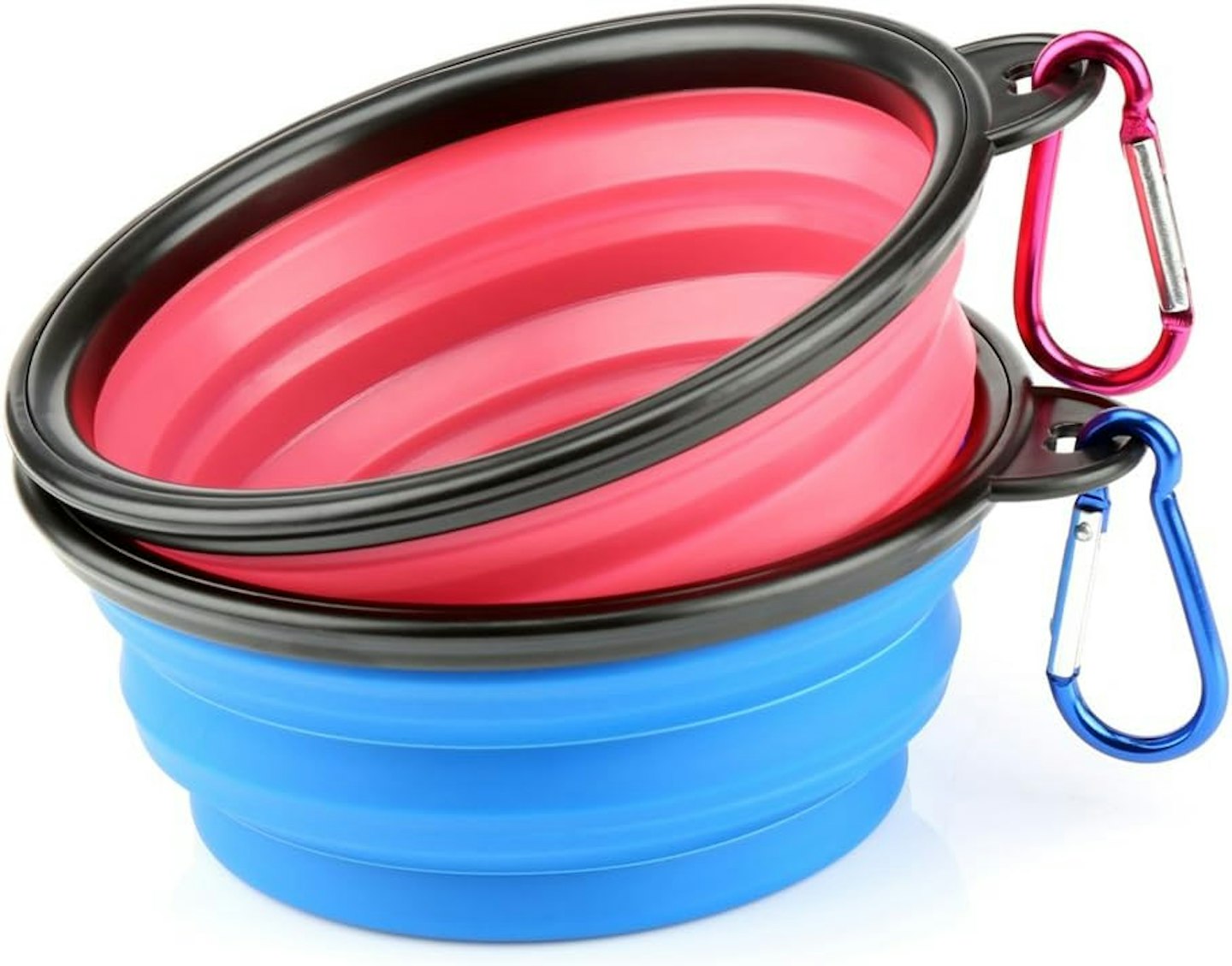 Amazon
AmazonHandy dog bowls which fold down and pack away when not in use.
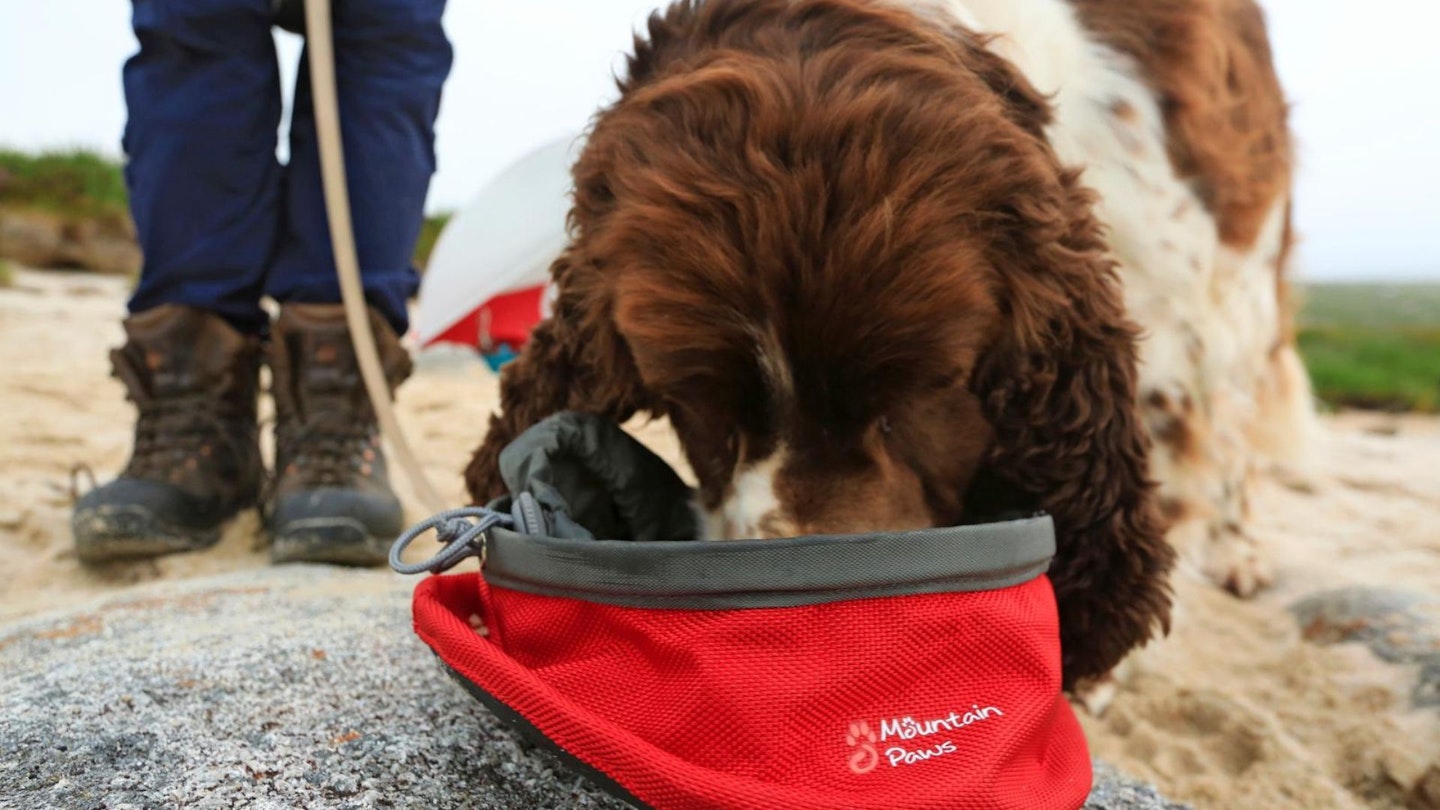
Of course, keeping your hound hydrated is very important. Many dogs will get by with lapping up from rivers and lakes, but if you’re in an area where you don’t know about the water quality - or if you’re not going near a fresh water source - it’s best to bring a bottle. We love the squeezy dog water bottles with the bowl attachment, but if you’re needing to save space, a collapsible bowl, which you can fill from any bottle and also use for food, does just as well.
 Amazon
AmazonPerfect for keeping your pup hydrated on the go.
Extra Layers
Many people overdress their dogs in the UK. We have a mild, temperate climate, and most dogs are kept adequately warm by their fur during the vast majority of the year. However, when you’re above 00m in wintery or windy conditions, some dogs - excluding huskies and other large double coated breeds designed for colder climates - will indeed feel the chill and need to layer up.
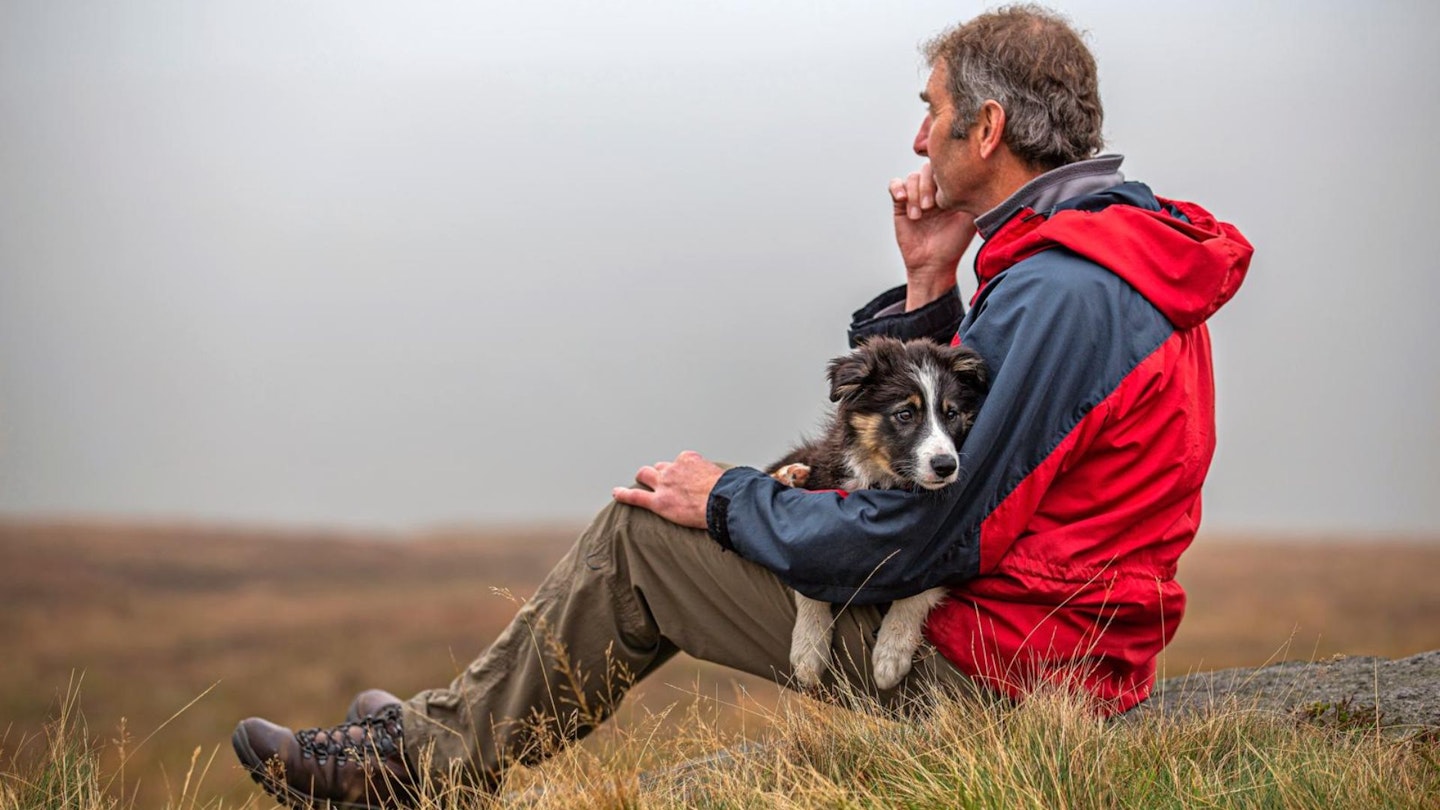
You’ll know when your hair-baby is cold because they’ll shake, their tail will disappear between their legs, and they’ll look at you’re the worst person in the world for bringing them on this walk and they’d like to go home, thank you very much. Often, a cheap single-layer windproof coat will do to keep the worst of the wind and weather off, but sometimes insulation is the name of the game, and a fleece or a padded jacket designed with dogs in mind is a worthwhile investment if you're out and about a lot in winter.
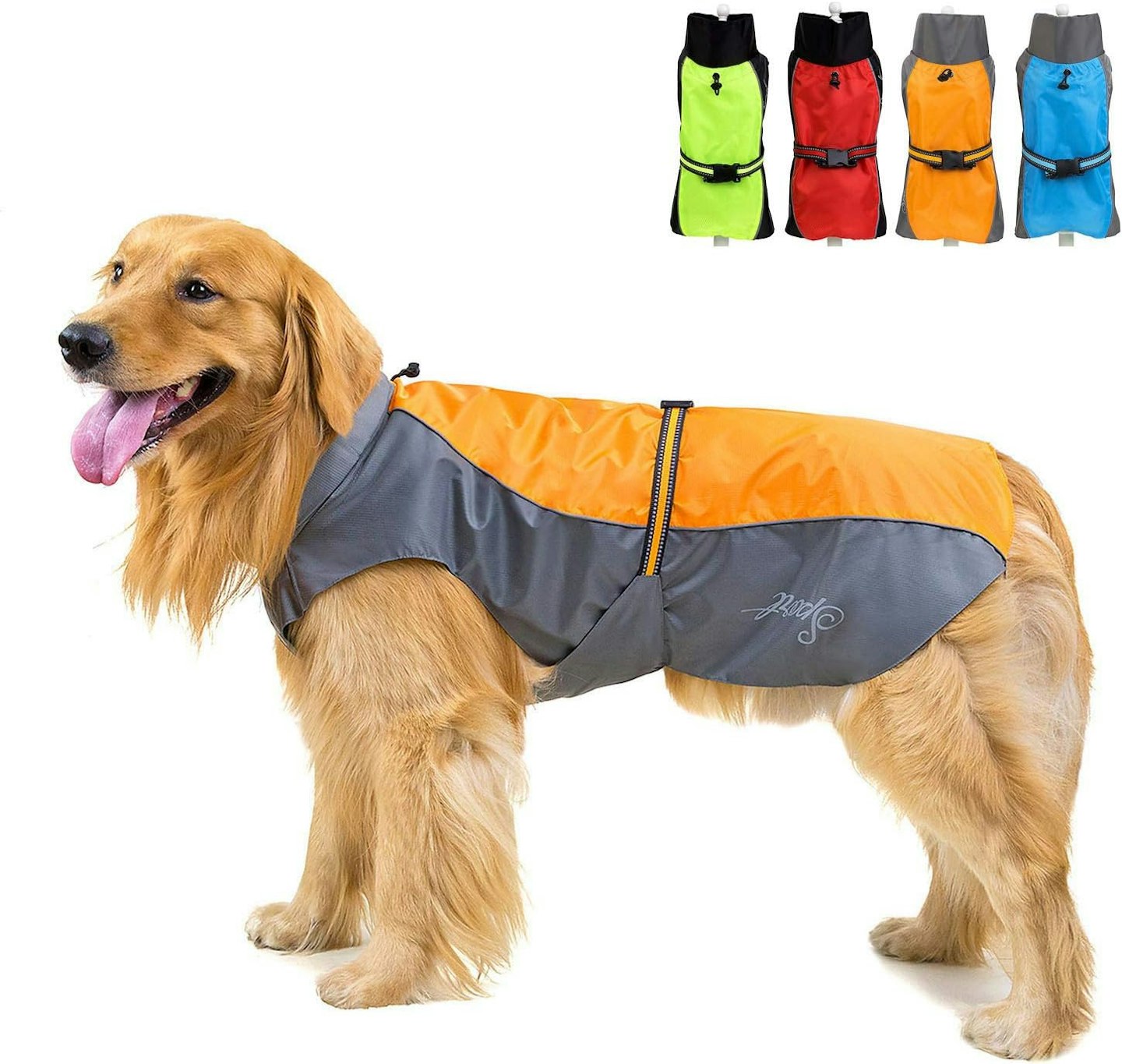 Amazon
Amazona single layer waterproof/windproof for your pooch
A fleece lined, water resistant jacket for very cold mountain days.
Doggy backpacks

As pack animals, dogs like to feel useful and important. Getting them to carry a light load (a roll of poo-bags, a bag of treats and perhaps a small toy) in a dog-specific backpack or backpack harness can increase their focus on the walk, slowing them down in a good way and making them more aware of their surroundings. It also takes a few hundred grams off the weight of your own pack, which can be really useful over longer distances.
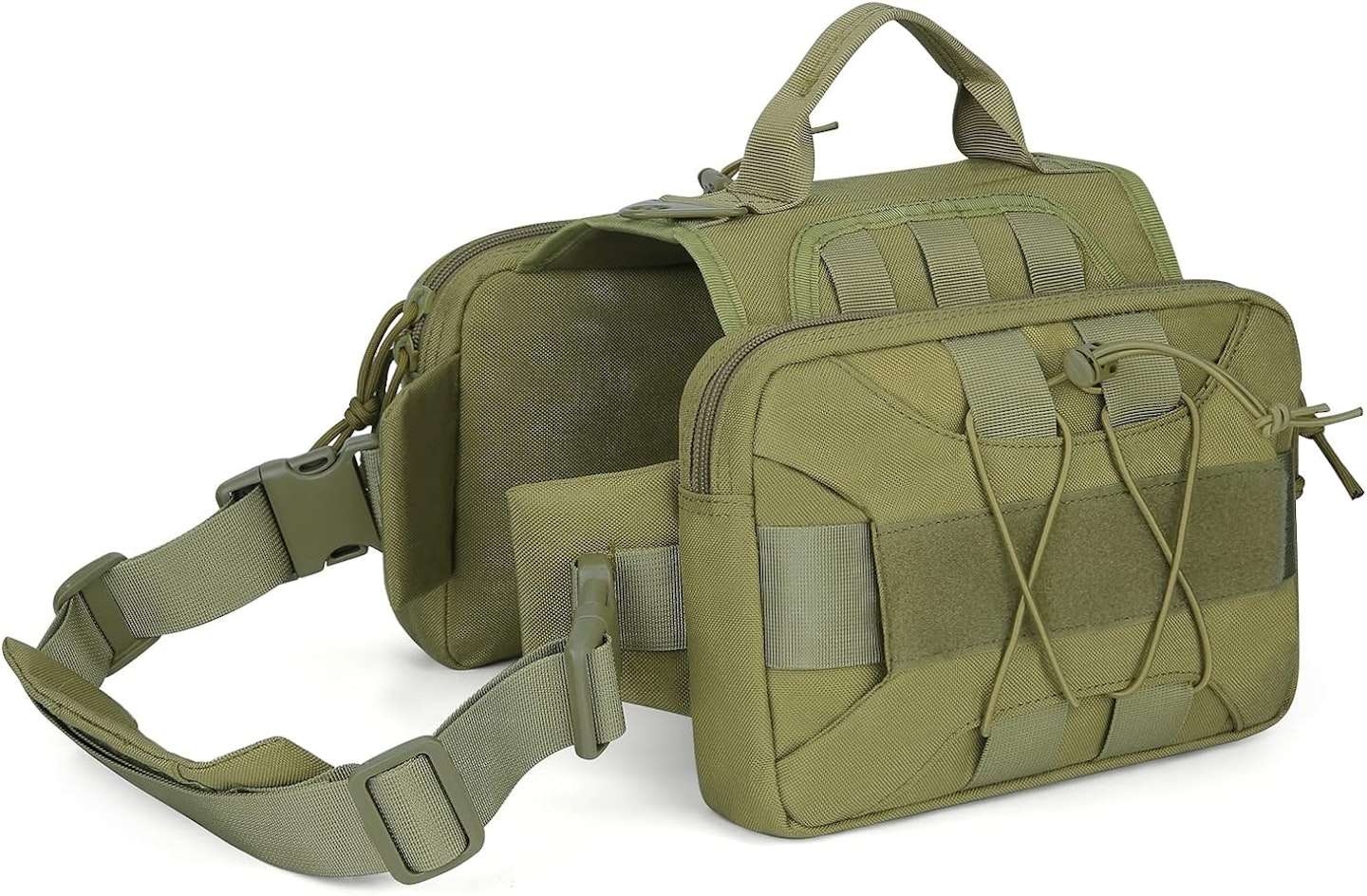 Amazon
AmazonGet your dog to carry its own kit!
About the author
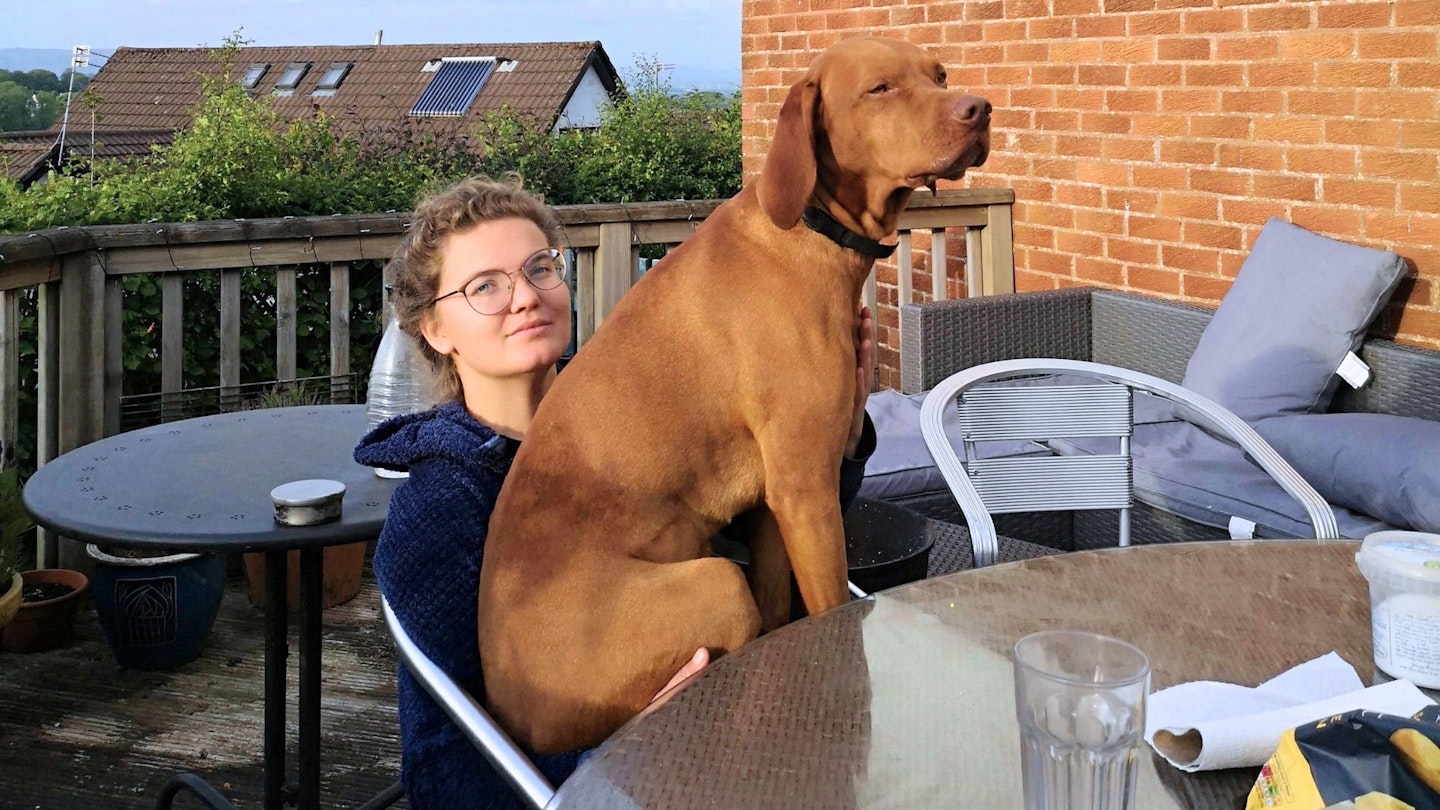
Fliss Freeborn is a writer for Live for the Outdoors, and regularly finds herself covered in Hungarian Vizslas. She is the designated dog-aunty for her extended family, and loves nothing more than running about the hills with as many four-legged friends as possible.

